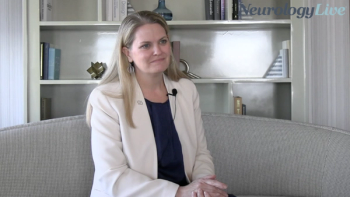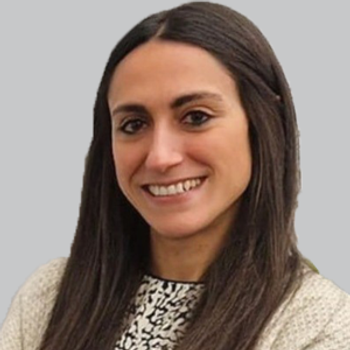
CMSC, National MS Society Release Multiple Sclerosis Physical Activity Recommendations

The exercise and physical activity recommendations were tailored to individuals with differing disability levels on the Expanded Disability Status Scale.
Rosalind C. Kalb, PhD
New recommendations created by the National MS Society and endorsed by the Consortium of Multiple Sclerosis Centers (CMSC) aimed at optimizing exercise and lifestyle physical activity for people with multiple sclerosis (MS) have been released.
The recommendations are headlined by the general thought that physicians and other healthcare providers should endorse and promote the benefits and safety of exercise and a lifestyle of physical activity for every person with MS.
Clinical and research experts in the fields of MS, exercise, rehabilitation, and physical activity were convened by the National MS Society to reach a consensus on optimal exercise and lifestyle physical activity recommendations for individuals with MS with disability level between 0 and 9.0 on the Expanded Disability Status Scale (EDSS). Additionally, the authors of the recommendations sought to identify and address the barriers and facilitators for participation.
The authors from both groups, led by Rosalind C. Kalb, PhD, clinical psychologist, and director, Professional Resource Center, National MS Society, used meta-analysis and systematic reviews of randomized controlled trials that demonstrated the benefits of people with MS who engage in exercise and lifestyle physical activity. They drew distinct differences in lifestyle physical activity, exercise, and rehabilitation. Lifestyle physical activity was defined as a daily accumulation of at least 30 minutes of activities, whereas exercise was defined as a form of leisure-time physical activity that is performed over an extended period of time, and rehabilitation as the ongoing use of intermittent strategies to regain or maintain optimal physical function.
Patients with the highest levels of disability and mobility challenges, or EDSS level between 7.0—9.0, were subdivided to allow more specific recommendations. The authors laid out clinical descriptors for each disability range of EDSS.
READ MORE:
The major clinical recommendations were as follows:
- Promoting the benefits and safety of exercise and lifestyle physical activity should be promoted by healthcare providers for every person with MS.
- Early evaluation by a physical/occupational therapist or exercise/sports scientist experienced in MS (specialists) is recommended to establish an individualized exercise and/or lifestyle physical activity plan.
- Taking into account comorbidities and symptom fluctuations, healthcare providers should encourage >150 min per week of exercise and/or >150 min per week of lifestyle physical activity.
- Progress toward these targets should be gradual, based on the person’s abilities, preferences, and safety.
- If disability increases and exercise/physical activity becomes more challenging, referrals to specialists are essential to ensure safe and appropriate prescriptions.
- When physical mobility is very limited, exercise should be facilitated by a trained assistant.
Barriers and facilitators to exercise and lifestyle physical activity that were identified included the physical and social environments of the individual, their general health and cognitive/behavioral condition, as well as the cost and time required for the individual.
“Every patient can benefit from guidance that is tailored to her or his needs, abilities, and preferences. To that end, recommendations for exercise and physical activity should include a range of options that take into account individual differences at every level of disability,” Kalb and coauthors concluded.
REFERENCE
Kalb R, Brown TR, Coote S, et al. Exercise and lifestyle physical activity recommendations for people with multiple sclerosis throughout the disease course. Mult Scler J. Published online April 23, 2020. doi: 10.1177/1352458520915629.
Newsletter
Keep your finger on the pulse of neurology—subscribe to NeurologyLive for expert interviews, new data, and breakthrough treatment updates.


































